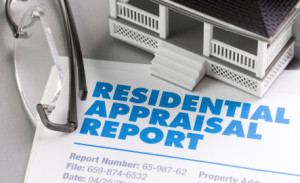Making Sense of Your Appraisal Report
Here is a simple guide to help you understand this sometimes very confusing document.
 Before any lender will loan you money to buy or refinance a home, the lender will attempt to get some idea of what the property is worth. After all, the real estate serves as the collateral that you will be putting up to secure the loan.
Before any lender will loan you money to buy or refinance a home, the lender will attempt to get some idea of what the property is worth. After all, the real estate serves as the collateral that you will be putting up to secure the loan.
Typically the lender will order an appraisal report. The value returned on this report will determine how much the lender is willing to lend.
Here is a simple guide to help you understand this sometimes very confusing document.
Basic home facts
The first page will have a number of headings that identify the subject property and any improvements that have been made to it. Scan this page to make sure it is accurate. If your property is in a specific neighborhood or community, it will be noted on this page. It’s important that this information be correct, as it helps the appraiser identify similar properties to which your property can be compared in order to determine its market value.
If any information on the first page is inaccurate, call the mortgage company to report it.
Comparable homes
The second page of the report is where you will find the actual number that lenders will use to base their decision upon. Much of the page is taken up with a chart that includes a number of columns, with a property in each. The first is taken up by the subject property, and to its right are a number of comparable homes, usually three, often referred to as comps.
The appraiser will attempt to list any comparable homes that have been sold within the past 6 months. These homes will all be located very close to the subject property in an attempt to minimize the differences in value that can be expected between different neighborhoods. In each column will be a value for the home. The recent sales will show the price the homes sold for.
Because every property is unique, making comparisons can be difficult and requires the appraiser to make adjustments to the comps’ sales prices to better estimate the market value of the subject property. This can be very confusing to the homeowner and often becomes a point of contention when homeowners believe their properties should be worth more than the appraisal report indicates.
Not all adjustments reduce the estimated market value of the subject property. If the best comps available are smaller homes, for instance, it could lead the appraiser to make a net positive adjustment to the estimated value on the report. All of the adjustments are then combined into a gross adjustment, which is used in the estimate but also serves as a gage of the confidence the lender should have in the final value. The higher the gross adjustment, the less reliable the report should be considered.
Estimated market value
At the bottom of the page, the appraiser will reveal the estimated market value of the home. This is the value lenders will use to determine how much money they will lend and is the basis for the loan-to-value ratio that is very important in the home finance process.
In some cases, the appraiser will also provide a cost value, which tells the lender what it would cost to replace the home. This can be used as the basis for home insurance purchased to protect the homeowner and the lender over the course of the loan’s lifetime.
Many other pages of information can be included with the report. These provide additional details on the subject or comparable properties.


